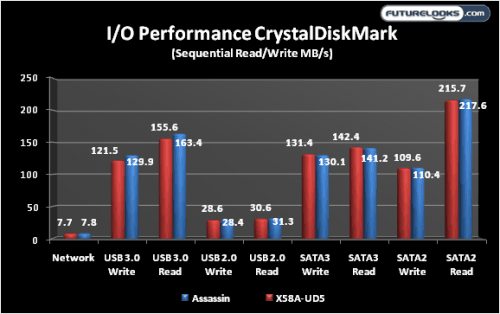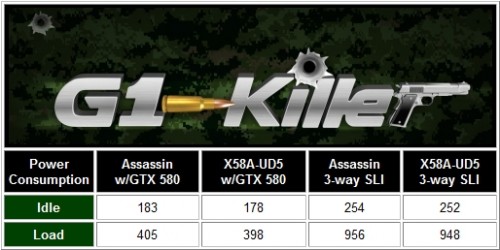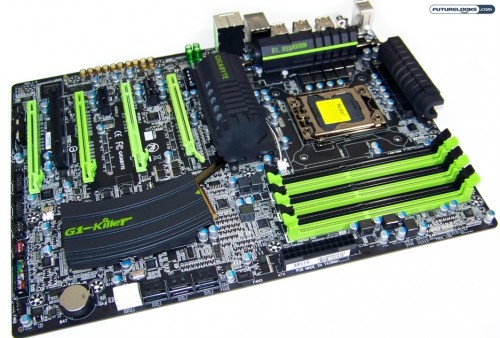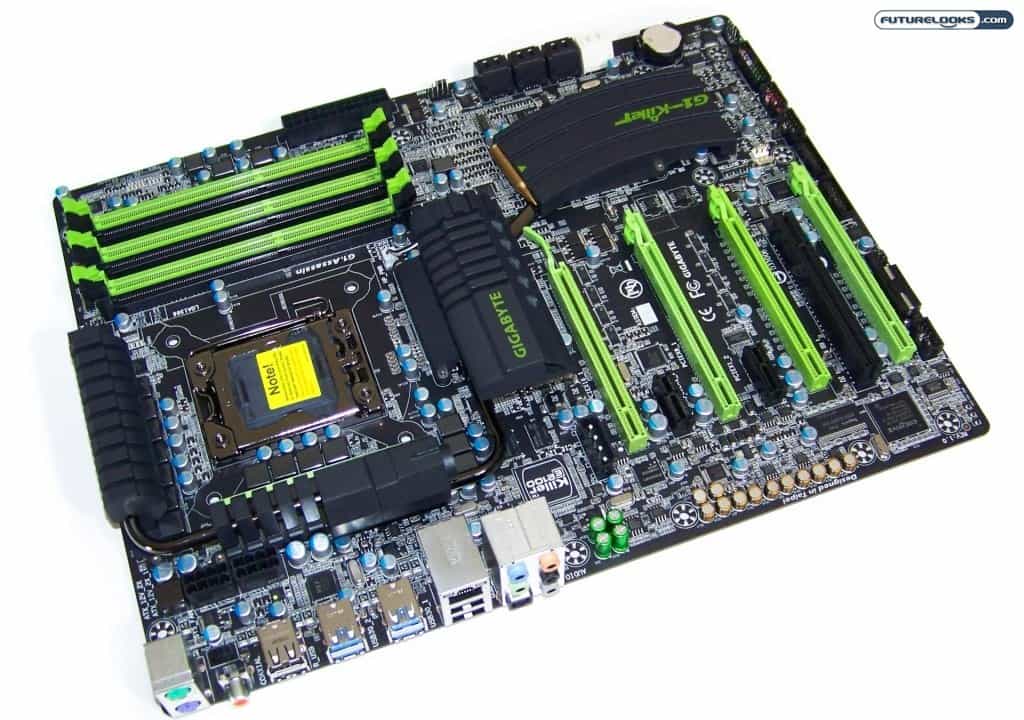Input/Output Performance

Look at the connectivity options we find that most of the I/O performance is very comparable which is to be expected since the boards use the same SATA2 and SATA3 controllers. But, for some reason, the G1 Assassin seems to give better write performance under USB 3.0. We’ll take what we can get.
Quality Control
The quality of component implementation and materials found on the Assassin are great. Everything is straight and in its place. That said, there are no board noises coming from any of the G1 Assassin’s many high end components. The UD5 however was not of the same quality as minor noises were detected around the CPU socket area.
Temperature measurements continue to show the X58 platform to be a little warmer than say, a P55 or P67. Still, the warmest board temp was 140F which was the largest heat sink when overclocked. The E2100 and Creative X-Fi were very manageable at 110F during the most intense extended amounts of use. Like any extreme gaming system, you’ll want to make sure your PC has decent case air flow.
Power Consumption

Power consumption reminds us that we’re using an X58 motherboard as they consume more power than any other Intel chipset desktop solution. Our G1 Assassin with a single GTX 580 idled at 183 watts and reached 405 watts running Furmark and Prime95. When running 3-way SLI, the system needed a lot more power, topping out at 956 watts. This is very typical of any fully loaded high end gaming system when running these types of configurations so make sure your power supply is at least 1200 watts in these scenarios.
Final Thoughts

It’s not surprising to see the GIGABYTE G1 Killer Assassin perform similarly to their own X58A-UD5 motherboards in many respects. They share quite a bit of engineering right down to the 16-Phase power. However, the Assassin overclocks just a little easier and completely surpasses it in audio quality and network performance. Not to mention, it is arguably one of the most impressive motherboards to launch to date. But, you may still be wondering why it costs so much.
A comparably featured high quality X58 motherboard will range in price from $280 to $300 USD. Serious gamers will go hunting for higher end audio like the Creative Labs X-Fi. However, the Assassin’s X-Fi offers a combination of audio features between the Titanium HD and Fatality. It will easily cost you somewhere around $150 USD to enjoy something similar. Serious gamers hate lag so a$75 Bigfoot Networks Killer 2100 PCIE card with 128MB integrated memory offers automated gaming network management eliminate latency. Total cost is about $500 USD at this point.
What GIGABYTE provides you is all these features without sacrificing expansion ports. It’s a completed integrated and supported solution that looks great doing what it does too. That’s $530 USD well spent when all the math settles. This is all topped off with a 3 year warranty which adds even more value.
The GIGABYTE G1.Assassin is an impressive culmination of planning and creativity designed to accommodate the most serious of hardcore gamers. And unlike other brands, there is no confusion about whether this is for a gamer or an overclocker, even though we’ve proven it can.
Pros
- Attractive Weaponized Theme
- High quality components and implementation
- Creative Labs X-Fi audio quality
- BigFoot Networks Killer E2100 w/128MB dedicated memory
- Good overclocking potential
- A True Thoroughbred Gaming Motherboard
Cons
- The $530 USD price tag increases barrier to affordability
- The dual 8-pin 12V power may require new PSU or extra adapters
Overall Rating: 9.0 / 10 .0

Love This Review? Hate This Review? Leave a Comment Below!

